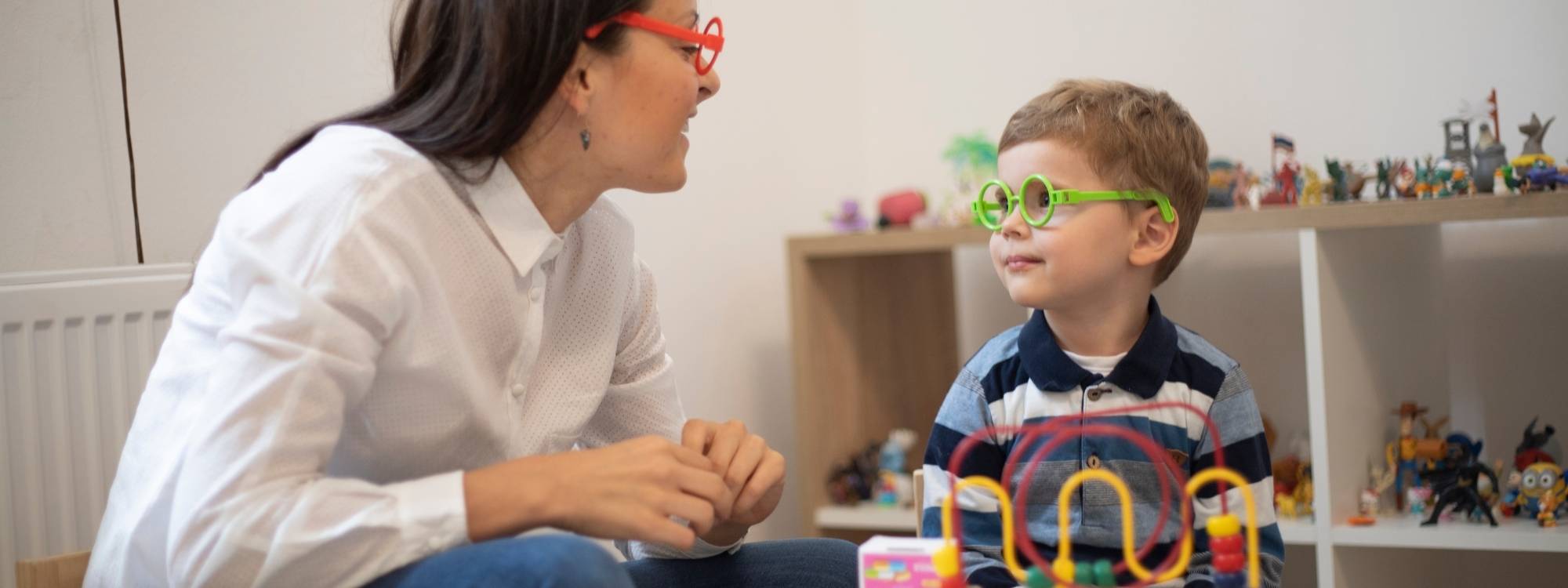IEP Goals for Students with Autism: Examples That Work
Introduction to Autism Spectrum Disorder
Autism Spectrum Disorder (ASD) is a developmental condition that impacts communication, behavior, and social interaction in varying ways, affecting the child’s educational journey. Since every autistic student has unique strengths and challenges, their educational support must be equally personalized. According to the CDC, approximately 1 in 36 children in the U.S. are diagnosed with autism, and many of them benefit from targeted support through an Individualized Education Program (IEP).
Well-crafted IEP goals for students with autism address core areas such as communication skills, emotional regulation, and executive functioning. These goals offer a clear roadmap for academic and developmental growth, helping educators and families work toward meaningful progress. When IEPs are tailored to the child’s needs, students are more likely to stay engaged, succeed in school, and build confidence over time.
Understanding the Individualized Education Program
An Individualized Education Program (IEP) is a legally mandated document that outlines personalized support and goals for students with disabilities. It serves as a roadmap for the child’s learning, highlighting how their school will provide access to a free and appropriate public education (FAPE).
For autistic students, the IEP addresses not just academics but also social skills, life skills, and behavioral strategies. It is developed collaboratively by a team that typically includes parents, teachers, special educators, therapists, and sometimes the student. Together, they design goals that are measurable, achievable, and meaningful to the child’s development.
IEPs aren’t static; they’re reviewed at least annually and adjusted as the student grows. This ensures that the educational environment evolves alongside the student’s needs and strengths.
Key Areas of Focus in IEP Goals
While each IEP is unique, most will focus on several key developmental areas to support both learning and daily life. Here’s how effective IEPs for students with autism typically address critical domains:
Academic Skills
Academic IEP goals are essential for building core competencies in reading, math, and writing. However, students with autism may require alternate routes to achieve these outcomes, especially if they struggle with attention, executive functioning skills, or sensory sensitivities.
For example, instead of only setting goals for reading fluency, educators might focus on problem-solving skills, task completion, or using visual supports to break assignments into manageable steps. These foundational strategies help students stay engaged and motivated.
Here are some sample academic IEP goal focuses:
- Completing assignments with the support of verbal or visual prompts
- Using a visual schedule to transition between academic tasks
- Identifying main ideas in short passages with 80% accuracy
- Solving word problems using structured activities with teacher support
Each goal should be directly tied to how the student learns best, whether that’s through movement, repetition, or one-on-one instruction.
Communication Skills
Many autistic students experience challenges with expressive language skills, receptive language, or both. IEP communication goals aim to help students communicate effectively, convey emotions, and engage in meaningful conversations with peers and adults.
These goals aren’t limited to verbal language. Students who use AAC (augmentative and alternative communication) systems, sign language, or communication boards should have goals that reflect those methods as well. Focusing on self-advocacy, asking for help, or expressing needs is just as important as forming complete sentences.
Key targets might include:
- Expanding vocabulary related to basic needs and academic topics
- Appropriately using gestures, facial expressions, or body language
- Initiating and maintaining peer interaction during group activities
- Requesting breaks or support using expressive tools
Strong communication skills empower students to participate more fully in their educational environment and daily life.
Independent Living Skills
Independent living skills help students with autism become more confident and capable both in and outside of school. These goals often support self-care, organization, time management, and navigating routines, skills that are foundational to long-term independence.
While these skills might not be academic in the traditional sense, they are often the key to school success. For example, being able to pack a backpack, follow a visual schedule, or request help can make or break a student’s ability to keep up with the demands of the school day.
Examples of independent living IEP goals:
- Following a daily schedule using a visual planner with 90% accuracy
- Completing morning routine (coat, backpack, lunch) within 10 minutes
- Transitioning between classes with appropriate materials independently
- Practicing self-care tasks (washing hands, brushing teeth) with fading prompts
These goals build the bridge between classroom success and real-world readiness.
Emotional Regulation
Many autistic students experience sensory sensitivities or have difficulty managing emotions, highlighting the need for effective coping strategies . This can lead to unexpected behaviors, school avoidance, or difficulty with transitions. Self-regulation goals are essential for helping students feel safe, understood, and ready to learn.
Emotional regulation goals help students recognize emotions, understand sensory triggers, and implement calming strategies when overwhelmed to encourage appropriate behaviors . Educators should collaborate with occupational therapists and mental health professionals to create achievable plans that help students regain control during challenging moments.
IEP goal areas may include:
- Identifying emotions using visuals or verbal cues
- Using a calming strategy (deep breathing, sensory tool) when upset
- Seeking help from a teacher when experiencing frustration
- Using appropriate strategies to reduce challenging behaviors in class
As students build awareness and self-regulation, their confidence and participation in learning improve significantly.
Developing Effective IEP Goals
Creating strong IEP goals is a collaborative, student-centered process. The most effective goals are SMART: specific, measurable, attainable, relevant, and time-bound. This format ensures that each goal can be tracked and adjusted as needed.
For example, instead of writing “Improve reading skills,” a SMART goal would be:
“The student will identify the main idea in a short paragraph with 80% accuracy on 4 out of 5 trials by May 2025.”
This goal is clear, trackable, and directly linked to a specific academic outcome.
When developing IEP goals, the team should consider the student’s strengths, communication preferences, and any sensory or behavioral factors that may impact learning. Collecting baseline data helps establish realistic targets and ensures the team can monitor progress effectively over time.
IEP Goals for Autism
IEP goals for autism should target specific challenges common among autistic students, while respecting their strengths and preferences. These often include:
- Communication goals: Expanding expressive/receptive language, using AAC, participating in conversations
- Social skills goals: Engaging in peer interaction, understanding personal space, and interpreting social cues
- Behavioral goals: Reducing negative behaviors, learning to use appropriate responses
- Academic goals: Completing assignments, improving comprehension, solving problems with support
Here’s a sample breakdown:
| Goal Area | Example IEP Goal |
|---|---|
| Communication | “Students will ask for help using AAC devices in 4/5 situations.” |
| Social Interaction | “Students will maintain personal space during group discussions 80% of the time.” |
| Academic Skills | “Students will complete 3 academic tasks with 1 visual prompt per day.” |
| Emotional Regulation | “Students will use a calming strategy when overwhelmed in 4 out of 5 instances.” |
By targeting specific outcomes, these goals support the meaningful progress that every autistic student deserves.
Creating an IEP Goal Bank
An IEP goal bank is a valuable tool for parents and educators who want to build strong, compliant, and individualized goals. These collections offer pre-written samples sorted by domain, skill, or support need.
Champions ABA’s goal bank, for example, includes over 1,200 ready-to-use goals across areas like social communication, academic success, life skills, and emotional regulation. While these goals are not one-size-fits-all, they provide a helpful starting point when brainstorming personalized objectives with your IEP team.
Always customize goals to the student, not just the diagnosis. A goal bank is only effective when used in combination with team collaboration and individualized planning.
Teaching Autistic Students
Teaching students with autism involves more than curriculum delivery; it’s about meeting the child where they are and making the learning environment responsive to their needs.
Educators who succeed in this space:
- Use visual supports and structured activities
- Break tasks into manageable steps
- Build strong teacher-student relationships
- Practice flexibility when routines or behaviors shift
Data collection, patience, and professional development play key roles in ensuring successful implementation. When educators apply these practices consistently, they help students actively participate and grow in confidence and capability.
Data Collection and Progress Monitoring
Measuring progress is essential to understanding if goals are working. Progress monitoring involves collecting regular data on how the student is doing, which helps the IEP team make informed adjustments throughout the school year.
Tools like teacher data sheets, observation logs, and weekly check-ins can be used to:
- Celebrate progress
- Identify plateaus or regressions
- Adjust supports and interventions as needed
Consistent data allows for honest conversations and stronger IEP team collaboration, ensuring no child falls behind unnoticed.
Collaboration and Teamwork
IEP goals are most effective when all team members are involved. That includes teachers, parents, therapists, and when appropriate the student. Collaboration builds trust, clarity, and accountability.
Parents bring valuable insights about the child’s history, triggers, and motivators. Teachers contribute classroom observations and instructional expertise. Together, they can create appropriate strategies that balance expectations with compassion.
Frequent communication ensures the IEP remains responsive to the student’s growth, not just a static document.
Conclusion
Creating effective IEP goals for students with autism requires thoughtful collaboration, individualized planning, and a clear understanding of each child’s unique strengths and challenges. When goals are specific, measurable, and responsive to the student’s needs, they lay the foundation for academic success, improved communication, greater independence, and emotional growth. By focusing on meaningful progress and regularly monitoring outcomes, educators and families can ensure that each student receives the support they need to thrive throughout their educational journey.
Unsure how to set the right IEP goals for your child with autism? At Champions ABA, we work closely with families to create personalized, goal-driven therapy plans that support meaningful progress in school and beyond. From communication skills to emotional regulation, our in-home ABA services are designed to meet your child’s unique needs. Call (877) 242-1744 or visit our website to get expert support on your child’s educational journey.
FAQs
What is an example of an IEP goal for autism?
An example is: “The student will initiate a conversation with a peer using a verbal or visual prompt in 4 out of 5 opportunities.” This goal focuses on building social interaction skills while including clear, measurable criteria for success.
What are the IEP recommendations for autism?
IEP recommendations for autism should address communication, social skills, emotional regulation, and academic support to achieve desired outcomes. The team should develop SMART goals, use data to track progress, and include appropriate accommodations to help the student thrive in a supportive learning environment.
What are the IEP reading goals for autistic students?
Reading goals may include identifying the main idea, answering comprehension questions, or reading with fluency, while also targeting social skills . For autistic students, goals might also incorporate visual aids, repetition, or assistive technology to ensure access and understanding.
What are the goals for a child with autism?
Goals vary by student but often include improving communication, increasing independence, enhancing social interactions, and regulating behavior. The key is making goals specific, measurable, and relevant to the child’s current developmental needs.



